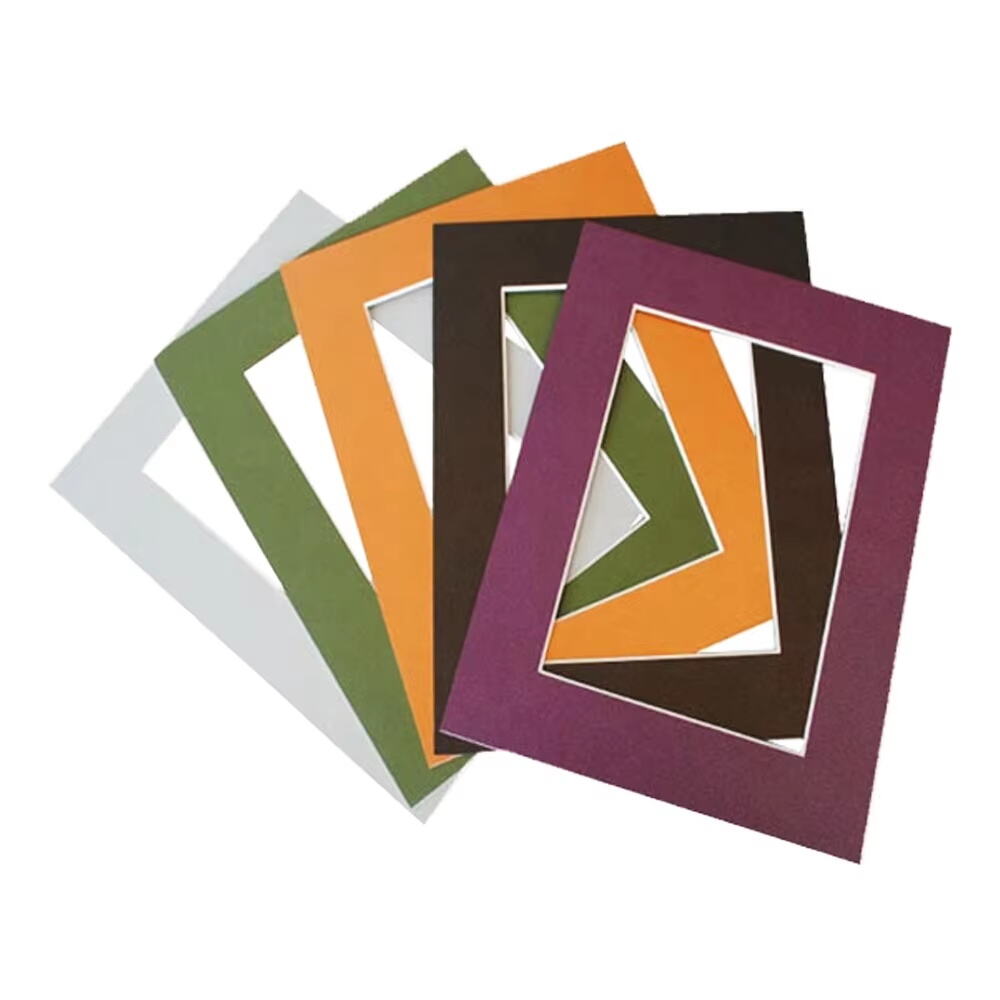Introduction to Acid-Free Mat Boards in Picture Framing
Acid free matting is essential for the preservation of fine art and photography. For landscape prints, fine art and even personal mementoes like artwork, photographs that hold meaning, or keepsakes, the framing materials you use to preserve and display these items can have a dramatic effect on how long they last in addition to their visual appearance. For one, acid-free mat boards are an important part of preserving all those memories we cherish and hold dear on display in our homes, but in order to effectively protect your memories, you have to know a little bit about what makes a mat board acid-free and the science behind it is pH neutrality.
What Makes a Mat Board Acid-Free?
King-size photo mats are made acid-free for use in framing to protect artwork and photographs from the damage caused by chemical reactions that may discolor the image over time. These boards are some hoary type of cotton rag or some special brand of refined wood pulp which has been used because it has the natural qualities of rigidity, safety, etc. It then becomes apparently that it is not the pH that is being referred to, as many of these substances contain buffering agents that serve to help maintain a pH within the media at their neutral point, usually a pH of at least 7. These matboards provide the appropriate pH levels and are tested in accordance with one of the two industry recognized test methods to insure the pH of the board is not less than 8.0 and not greater than 9.5. We can protect our valuable art and photos from yellowing and damage caused by acid with acid-free, buffered materials.
The Science Behind pH Neutral Materials
You will learn about the science of pH-neutrality in materials used for acid-free mat boards which can be very enlightening. Acidic ingredients are responsible for the deterioration of fine arts and photos over time, as they cause the paper to yellow and the colours on the print to fade. But by introducing acid-free mat boards that are neutral pH we can minimize these risks greatly. Science has shown the need to use pH-neutral adhesives, tapes and acid-free boards in the proper mounting of artworks. These resources arenotmerely a decorative demarcation;theyguarantee that the items remain in existence as long as possible by halting most of thechemical process that usuallyensues withdecay. Therefore the use of pH-neutral material is important if you want to preserve your valuable framed pieces for years to come.
Extending Artwork Longevity with Acid-Free Protection
How Acidic Materials Accelerate Degradation
The deleterious effect of acidic framing materials on works of art can contribute to the accelerated degradation and the loss of aesthetic and structural integrity. The degradation of a work of art is directly traced back to pH acidic framing materials which are accountable for its rapid decomposition. This occurs when the acids in most papers are able to migrate into the artwork and cause yellowing and permanent deterioration. It is important to bear in mind the environmental conditions that also contribute to the preservation process. Influence of temperature and humidity: Such attack can be increased by varying climatic factors such as temperature and humidity, both of which could serve to foster chemical attack. This more comprehensive knowledge assists in deciding on the most appropriate materials and conditions to frame and store such valuable objects.
Preventing Brittleness and Fiber Breakdown
Archival mats must be use to protect the fibers of an artwork to avoid any brittleness. Especially in paper-based art, acid-free provides a buffer that safeguards texture and clarity from the degradation effects of light, moisture and airborne pollutants, and it may also support the stable printing of inks through the paper. It is also good practice to frequently check and swap frames, to add an added layer of protection to your artwork, experts have advised. This precaution helps to prevent prolonged exposure to environmental factors that can work to reduce the protection that acid-free materials are meant to provide. In selecting acid-free media we're not just considering the present look of artworks, but their lasting impact.
Maintaining Color Integrity Over Decades
Blocking Yellowing of Adjacent Materials
Acid Free Boards Acid free mats are an important asset in preserving the vibrancy of a framed print over time, not to mention preventing adjacent materials from yellowing. There is very little yellowing of the artwork as the acids do not migrate to other elements adjacent to the image. Studies of the rate of color change have shown that, when mat boards are made from acid-free materials, there is virtually no color change in the art for more than one hundred years as measured in accelerated tests, without the protective glazing over the print that was included in our products. This is where choosing the right material, which has long lasting colour effects, becomes important to maintain the aesthetic of favourite items for a long period of time.
UV Resistance and Fade Prevention
“Using acid-free mat boards combined with UV-protective glass or acrylic can dramatically improve color loss,” and shield framed pieces from the effects of light over time. A cocktail that helps hair achieve a healthier appearance and provides UV protection against damage from the sun, which can lead to the loss of elasticity or even color fading. Market research confirms that framing choices with UV protection greatly extend the life of overall color in artwork. It is also important to comprehend the potential harm caused by UV exposure, so you should select the right fit for framing materials that ensures long term protection. This protection for our treasured mementos and works of art allows us to maintain their heritage and aesthetic appeal for generations.
Safe Preservation for Diverse Art Media
Non-Reactive with Photographic Emulsions
One of acid-free matting board's best assets is that it does not have chemical reactions (like normal cardboard) with your pictures. This assures the sharpness of photographs over the life of the photograph. The large majority of studies indicate that acid-free framed photographs show a much lower level of degradation than photographs framed with conventional materials. In fact, photographic conservators also strongly encourage that with out these acid-free components, photographs may to sooner or later fade and/or turn colours in addition to mildew. Hence, acid-free mat boards is a must for those desiring to maintain the quality and durability of their photographs for years and even generations to come.
Protecting Watercolors and Oil-Based Inks
As well, acid-free mat boards are also critical in preserving watercolors and oil-based inks, keeping intact the fragile organic media. Its special features protect artwork from bleeding and fading that is a challenge with watercolours with passage of time. Specialists in conservation maintain that the ideal framing process necessitates the use of acid-free materials, in order to uphold the true colors and quality of the original image. By selecting acid-free mat boards artists and collectors can be feel confident that their artwork will receive the protection and stabilization that they deserve. Such protection cushions the aesthetic and the economic aspects of the art.
Cost-Effective Framing Through Preventive Care
Reducing Restoration Expenses
Purchasing acid-free mat boards is a smart investment to save on the cost of restoration and help reduce the cost of an treatment. Acid free materials protect against deterioration that can cause artwork to fade or disintegrate making it ideal for protecting costly restored work. Financial analyses reveal that the cost of providing the best materials for framing is a small fraction of what you will spend over time trying to restore damage done by poor quality, acidic components. The industries pros definitely recommend using acid-free materials and point out the tremendous amount of money (in terms of conservation and restoration costs) that is saved. Not only does this preventative move prolong the life of your favorite painting, it also saves you money in the long run.
Long-Term Value for Collectors
For art collectors, this results in great long-term value for their collections. Studies have shown that artworks matting and mounting in acid-free materials experience higher market value appreciation and are more attractive for collectors and investors as for those who seek high quality preservation. This makes such works more actively sought after on the market, which in turn translates to better returns on investments for collectors. This notion is supported by market trends which demonstrate that collectors who value preservations of objects, and invest in acid free framing will have a better chance of realizing an economic benefit. This reinforces the need to use acid-free supplies not just for the immediate preservation of art, but also its long-term monetary value.
FAQs
Why is it important to use acid-free materials in picture framing?
Acid-free materials are essential for the long-term preservation of art pieces and photographs. They help prevent chemical reactions that cause degradation, yellowing, and discoloration.
How do acid-free mat boards protect artwork from UV rays?
When combined with UV-resistant glass or acrylic, acid-free mat boards help guard against UV rays, preventing fading and color loss over time.
Why should collectors invest in acid-free mat boards?
Acid-free mat boards ensure preservation, enhance the artwork's long-term value, and attract buyers who prioritize high-quality conservation.
Can acid-free mat boards prevent the brittleness of paper-based artwork?
Yes, acid-free materials stabilize the fibers, reducing brittleness and preserving the artwork's texture and clarity against environmental stressors.
Table of Contents
- Introduction to Acid-Free Mat Boards in Picture Framing
- What Makes a Mat Board Acid-Free?
- The Science Behind pH Neutral Materials
- Extending Artwork Longevity with Acid-Free Protection
- Maintaining Color Integrity Over Decades
- Safe Preservation for Diverse Art Media
- Cost-Effective Framing Through Preventive Care
- FAQs

